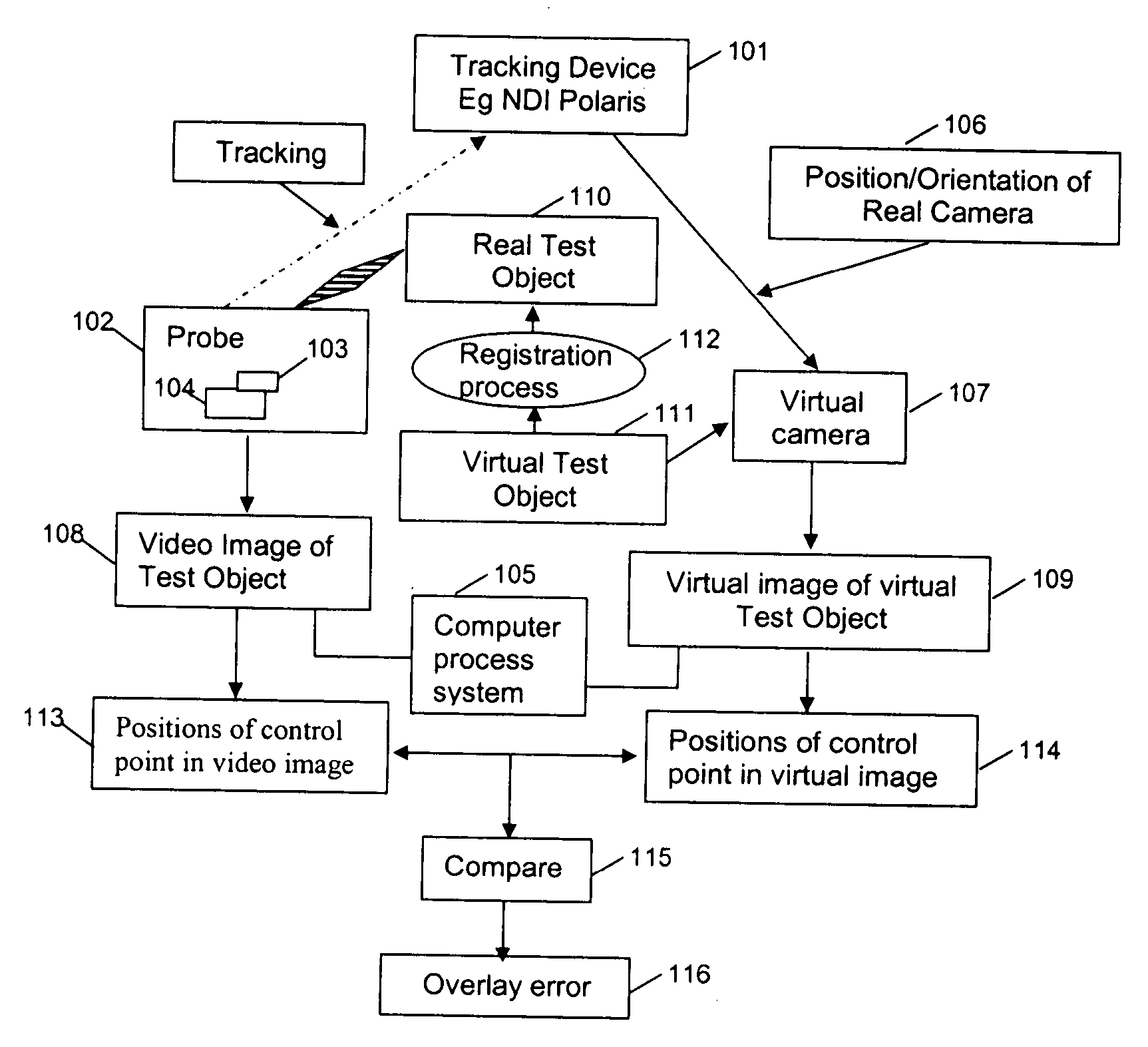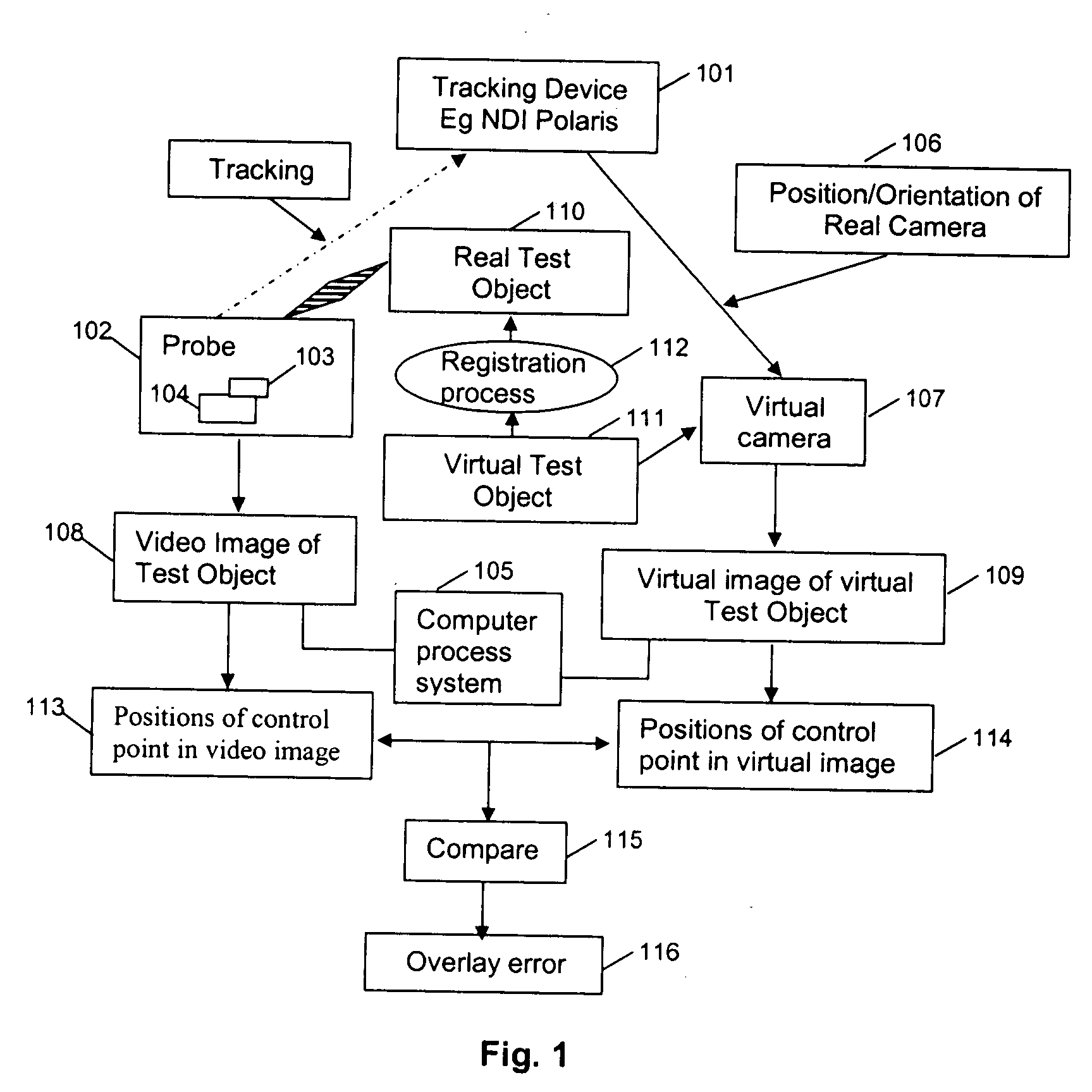Accuracy evaluation of video-based augmented reality enhanced surgical navigation systems
a surgical navigation system and augmented reality technology, applied in the field of accurate evaluation of video-based augmented reality enhanced surgical navigation systems, can solve the problems of inability to direct the surgical instrument being guided with reference to the location in the 3d rendering, inability to accurately reflect and inability to detect the position of certain areas
- Summary
- Abstract
- Description
- Claims
- Application Information
AI Technical Summary
Benefits of technology
Problems solved by technology
Method used
Image
Examples
example
[0091] The following example illustrates an exemplary evaluation of an AR system using methods and apparatus according to an exemplary embodiment of the present invention.
1. Accuracy Space
[0092] The accuracy space was defined as a pyramidal space associated with the camera. Its near plane to the viewpoint of the camera is 130 mm, the same as the probe tip. The depth of the pyramid is 170 mm. The height and width at the near plane are both 75 mm and at the far plane are both 174 mm, corresponding to a 512×512 pixels area in the image, as is illustrated in FIG. 5.
[0093] The overlay accuracy in the accuracy space was evaluated by eliminating the control points outside the accuracy space from the data set collected for the evaluation.
2. Equipment Used
[0094] 1. A motor driven linear stage which is made of a KS312-300 Suruga Z axis motorized stage, a DFC 1507P Oriental Stepper driver, a M1500, MicroE linear encoder and a MPC3024Z JAC motion control card. An adaptor plate was mounte...
PUM
 Login to View More
Login to View More Abstract
Description
Claims
Application Information
 Login to View More
Login to View More - R&D
- Intellectual Property
- Life Sciences
- Materials
- Tech Scout
- Unparalleled Data Quality
- Higher Quality Content
- 60% Fewer Hallucinations
Browse by: Latest US Patents, China's latest patents, Technical Efficacy Thesaurus, Application Domain, Technology Topic, Popular Technical Reports.
© 2025 PatSnap. All rights reserved.Legal|Privacy policy|Modern Slavery Act Transparency Statement|Sitemap|About US| Contact US: help@patsnap.com



